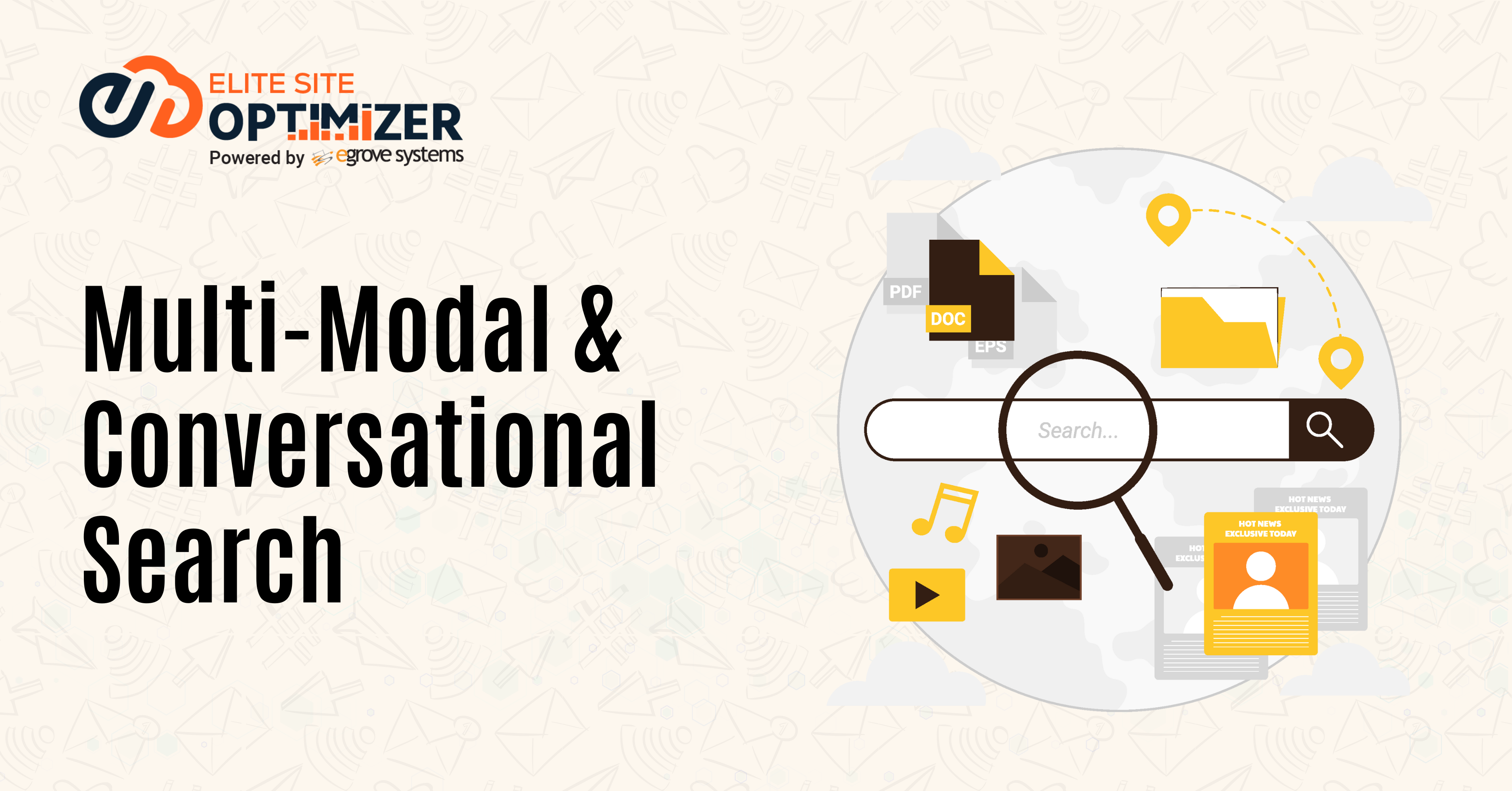Imagine getting into a physical garment store and asking the shopkeeper to show you some outfits for a special event.
After reviewing a few collections, a particular dress catches your attention. You love everything about it, such as its fall, its style, and its modern look. However, you are unable to find the right size. So, you request its various size options and ask for suggestions on which could be the right fit for you.
Similarly, when you walk into a jewelry store to grab some earrings or necklaces, you might ask the shopkeeper, “Can you show me different color options of this earring/necklace?” Now, imagine the magic of doing the same online, without typing in too many keywords. All you need to do is upload a picture of your chosen product and ask your question.
Earlier, we used to type in some keywords into the search box of any search engine to navigate the internet and find relevant answers. We are witnessing a paradigm shift in the digital world from conventional keyword-based searches to multi-modal and conversational searches. Today, we can interact with search engines during a search, such as through text, images, voice, or even video. It’s like asking a knowledgeable person to acquire the required information we are looking for effortlessly.
What is Multi-Modal Search?
This type of search is a feature of the search engine that helps you understand different types of search types, including images, gestures, voice, and text. This search generates accurate search results. According to the specific ‘modes’ or data types, multi-modal search is able to understand the search intent to come up with the most relevant search results.
For example, you can ask questions like, “Show me different color options of this earring,” “I want this dress in size L’,” etc. Or you can upload a screenshot or product image of a ready-to-cook product and ask the AI-powered search engine to suggest some easy recipes using the same. That’s the power of modern-day conversational and multi-modal search features.
What is Conversational Search?
Conversational search refers to the search experience that simulates a human conversation using natural language processing. Therefore, it enables users to interact with the search engine by engaging in a two-way dialogue-style conversation, allowing them to refine their queries to receive more polished and personalized responses. Therefore, users can even ask follow-up questions, get into the depth of a particular subject, and clarify doubts without repeating their original context every time.
When compared with conventional searches that use keywords, you can enhance your response until you are totally satisfied with the outcomes.
How Multi-Modal Search Improves Search Information
- Intent-Based Responses
Advanced conversational tools do more than providing links or answers to relevant content. They hold the ability to understand your unique needs. This allows conversational, AI-based search engines to deliver quality content and maintain relevance.
To refine your content, ask your digital marketing professional to conduct a comprehensive performance analysis and content audit of your site. It will help improve user experiences by providing them with the most relevant responses through the power of generative AI.
- User Experience Enhancement
With the help of advanced AI, modern search systems help users to express themselves more effectively.
So, it removes friction or the feeling that they are speaking to a robot, thanks to AI’s ability to mimic human language and understand their emotions and concerns. Besides, try integrating an accessibility checker to ensure that your online portal is compatible with accepting multiple inputs, particularly for differently-abled users.
- Ensures Smart and Intent-Based Searches
These days, we can witness a more proactive search, which involves a system that anticipates the user’s intent and context. The process assists search engines in providing highly relevant information with the help of advanced technologies.
These AI-based technologies are enabling brands to anticipate the needs and concerns of their potential customers. To ensure the most relevant intent-based information discovery for users, brands should have a well-structured SEO audit strategy.
How Elite Site Optimizer Can Help You Strengthen Your Digital Assets
Elite Site Optimizer is an efficient SEO tool that combines the joint power of site analysis, performance evaluation, content audits, and accessibility checker – all under one dashboard.
- Content audit to make sure that the website contains relevant features.
- An in-depth analysis of the entire site, along with performance analysis. This helps in understanding the potential issues with the website.
- In-depth SEO audit to make the content easily discoverable.
- Using an accessibility checker to help every user interact with your content.
Be Prepared for What’s Coming!
We can already witness a revolutionary search trend with an increasing use of multi-modal, conversational search and generative AI. It’s high time to set the stage and be prepared for the significant shift in information searching trends. In fact, most of us have already started using generative AI tools, like ChatGPT, to look for answers. Therefore, strengthen your digital assets and start implementing them into your online spaces, if you haven’t already!







